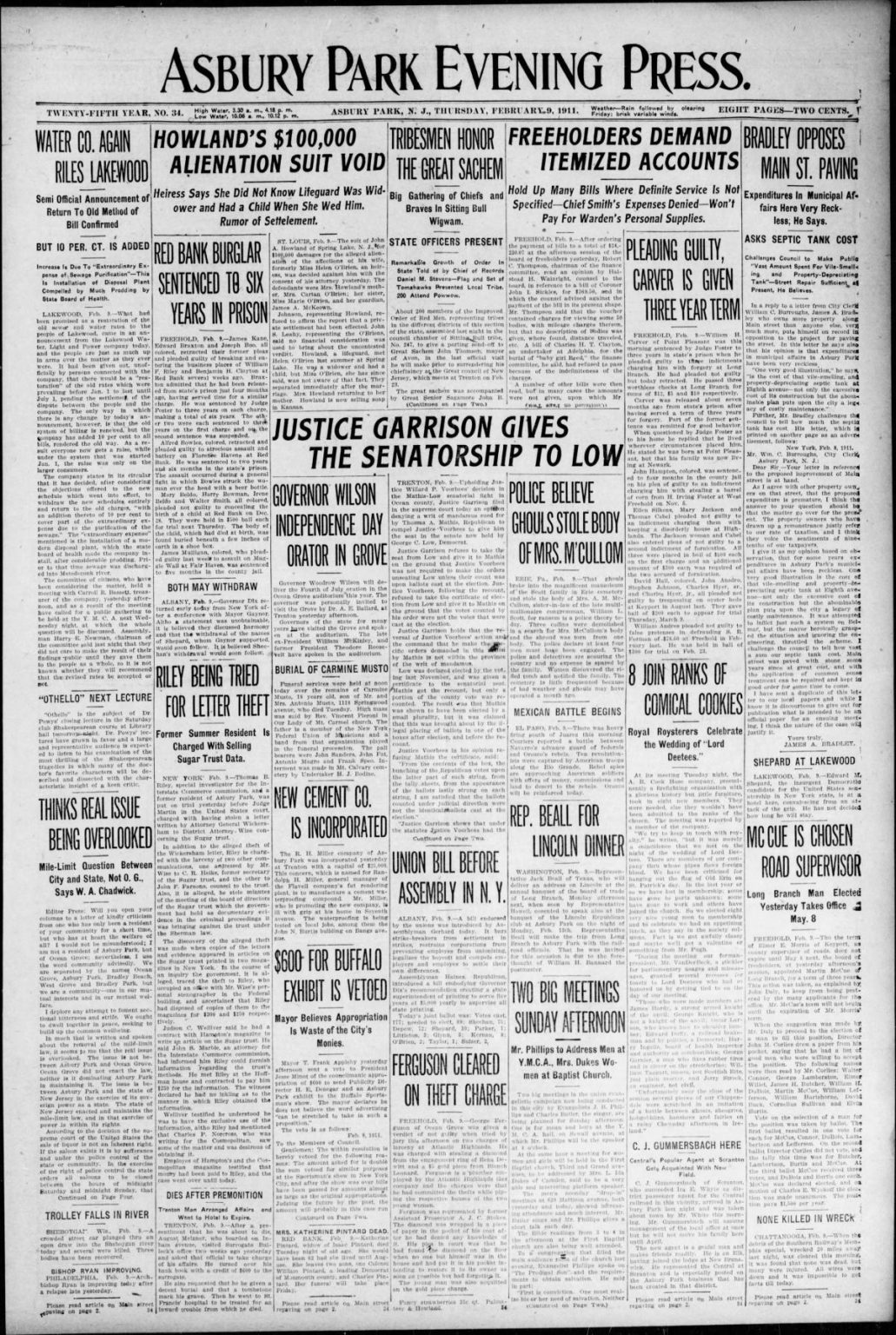Sunday, February 9, 1911: A Day in the Life of Asbury Park and Beyond
Introduction: A Snapshot of 1911
On Sunday, February 9, 1911, the quiet town of Asbury Park was abuzz with news that reflected both local concerns and national intrigue. The community, known for its beaches and growing reputation as a resort destination, was bracing for change, as evidenced by the day’s events. This article captures the essence of that day, offering a glimpse into the lives and issues of the people of Asbury Park and beyond.
James A. Bradley’s Crusade Against Municipal Spending
James A. Bradley, the influential founder and major landowner of Asbury Park, was vocal about his disapproval of the city’s recent expenditures. His primary concern was a septic tank project on Eighth Avenue, which he deemed a costly and ill-conceived venture. Bradley’s critique went beyond mere dollars and cents; he argued that such projects were not only a drain on resources but also detrimental to property values, which were crucial for the town’s appeal. His stance was not just that of a concerned citizen but also a businessman safeguarding his investments and the community’s future.
Woodrow Wilson’s Rising Star in Politics
In Ocean Grove, the news of Governor Woodrow Wilson’s invitation to deliver the Fourth of July address marked a significant moment in his burgeoning political career. Wilson, who would later become the 28th President of the United States, was already making waves with his progressive policies. His acceptance to speak at a venue where notable figures like William McKinley and Theodore Roosevelt had previously addressed, underscored his growing influence. This event was not just a local honor but a stepping stone in Wilson’s journey to the White House.
A Ghoul’s Tale: The Bizarre Theft in Erie, Pennsylvania
In a twist of macabre, the day’s news included a shocking incident from Erie, Pennsylvania. The theft of Mrs. McCullom’s body from a mausoleum, believed to be the work of ghouls seeking ransom, sent shockwaves through the community. The police investigation revealed a disturbing level of planning and violence, with overturned coffins and torn shrouds. This eerie event, though far from Asbury Park, reminded its residents of the darker elements that existed beyond their peaceful shores.
Community Chronicles and Curiosities
The day was also filled with snippets of local life and broader events. August Melzner’s premonition of death, leading him to arrange his affairs meticulously, added a somber note to the day’s news. His story, a blend of the tragic and the intriguing, offered a reminder of life’s unpredictability. Meanwhile, Mark Guy’s Auto-Inn Garage advertised the latest Regal Touring Car, a testament to the era’s growing fascination with automobiles. The mention of a time machine in the advert was a clever touch, highlighting the novelty and excitement surrounding new technologies.
Internationally, the Mexican Revolution raged on, with skirmishes near Juarez and El Paso, Texas. Closer to home, the passing of Katherine Pintard in Red Bank marked the end of an era for a prominent local family. These diverse events, each in its own way, contributed to the tapestry of life in early 20th-century America.
Conclusion: Reflecting on a Day in 1911
The news of February 9, 1911, paints a vivid picture of life in Asbury Park and the wider world. From Bradley’s fiscal conservatism to Wilson’s political ascent, each story offers insights into the social and political currents of the time. The blending of local concerns with national and international events reminds us that even in a bygone era, the threads of society were deeply interconnected. As we reflect on this day, we are drawn into a world on the brink of change, where progress and tradition coexisted in an intricate dance.









